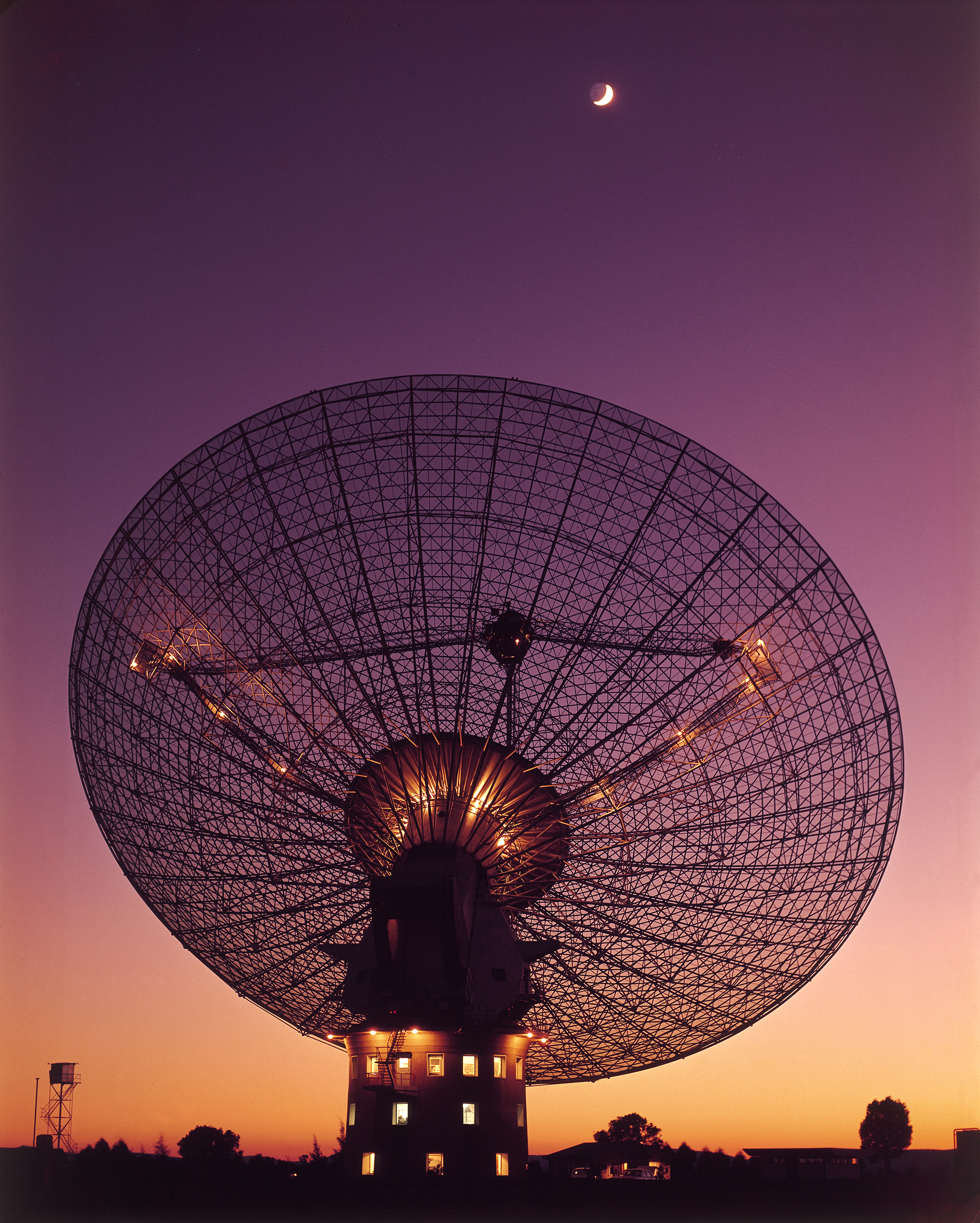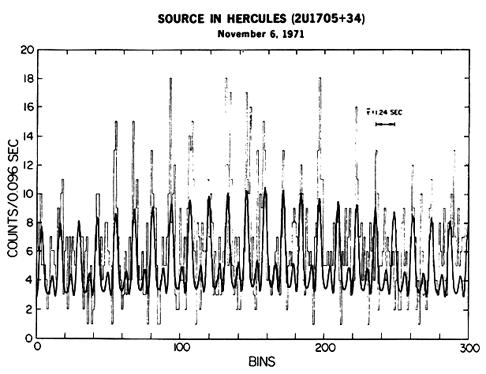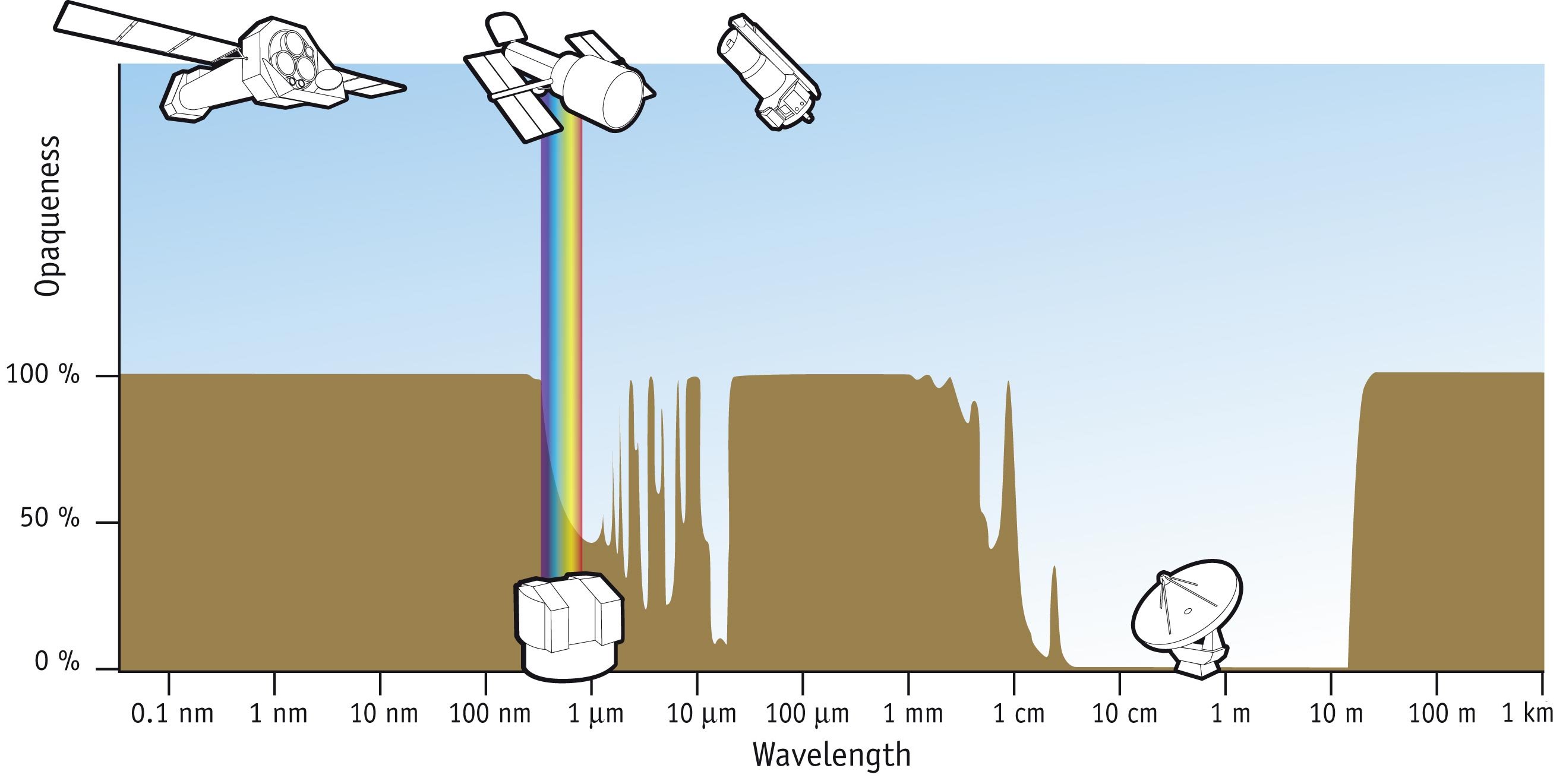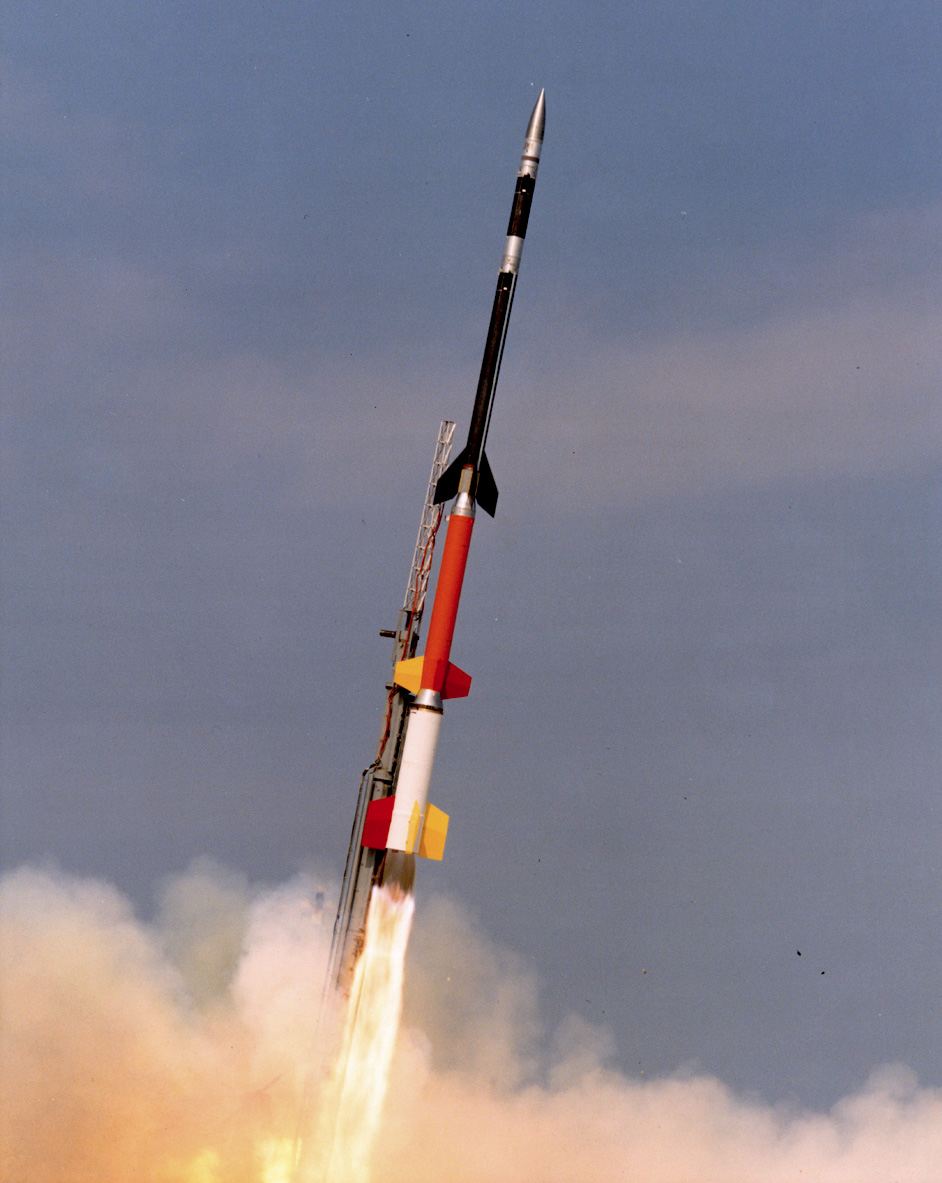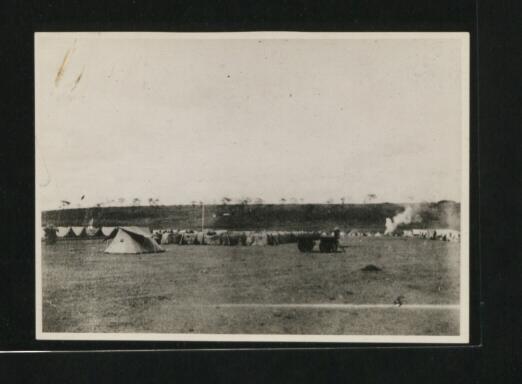|
San Marco Platform
The Luigi Broglio Malindi Space Center (LBMSC) located near Malindi, Kenya, is an Italian Space Agency (ASI) Spaceport. It was named after its founder and Italian space pioneer Luigi Broglio. Developed in the 1960s through a partnership between the Sapienza University of Rome's Aerospace Research Centre and the National Aeronautics and Space Administration (NASA), the BSC served as a spaceport for the launch of both Italian and international satellites (1967–1988). The center comprises a main offshore launch site, known as the San Marco platform, as well as two secondary control platforms and a communications ground station on the mainland. In 2003, a legislative decree handed management of the center to ASI, beginning in 2004, and the name changed from the previous San Marco Equatorial Range. While the ground station is still in use for satellite communications, the BSC is not currently used as a launch site. History The San Marco platform was a former oil platform, ... [...More Info...] [...Related Items...] OR: [Wikipedia] [Google] [Baidu] |
Scout (rocket Family)
The Scout family of rockets were American launch vehicles designed to place small satellites into orbit around the Earth. The Scout multistage rocket was the first orbital launch vehicle to be entirely composed of solid fuel stages. It was also the only vehicle of that type until the successful launch of the Japanese Lambda 4S in 1970. The original Scout (a backronym for Solid Controlled Orbital Utility Test system) was designed in 1957 at the NACA, at Langley center. Scout launch vehicles were used from 1961 until 1994. To enhance reliability the development team opted to use "off the shelf" hardware, originally produced for military programs. According to the NASA The National Aeronautics and Space Administration (NASA ) is an independent agencies of the United States government, independent agency of the federal government of the United States, US federal government responsible for the United States ... fact sheet: "... the first stage motor was a combination of the ... [...More Info...] [...Related Items...] OR: [Wikipedia] [Google] [Baidu] |
Ras Ngomeni
Ras Ngomeni is a cape on the Indian Ocean coast of Kenya. A Swahili settlement lay just to its south between the 5th and 13th centuries. It continued as a harbour into the 16th century., p. 34. According to the '' Book of the Zanj'', Ngomeni was founded by the king of Himyar, Abu Karib, who reigned in AD 390–420. It was built on the north side of Sheshale Point and the Sabaki river in an area of saltwater lagoons., p. 29. Its major product was mangroves.. It was overtaken by the sea in the 13th century. As of 1961, only a house remained of the original town., pp. 84–85. It is sometimes called Old Ngomeni to distinguish it from modern Ngomeni in the interior. In 2007, a Portuguese shipwreck was discovered off Ngomeni. It dates to 1500–1550, making it the oldest shipwreck yet found in sub-Saharan Africa. Today, the name Ngomeni refers to a fishing village about north of Malindi Malindi is a town on Malindi Bay at the mouth of the Sabaki River, lying on the Indian Oce ... [...More Info...] [...Related Items...] OR: [Wikipedia] [Google] [Baidu] |
Ground Station
A ground station, Earth station, or Earth terminal is a terrestrial radio station designed for extraplanetary telecommunication with spacecraft (constituting part of the ground segment of the spacecraft system), or reception of radio waves from astronomical radio sources. Ground stations may be located either on the surface of the Earth, or in its atmosphere. Earth stations communicate with spacecraft by transmitting and receiving radio waves in the super high frequency (SHF) or extremely high frequency (EHF) bands (e.g. microwaves). When a ground station successfully transmits radio waves to a spacecraft (or vice versa), it establishes a telecommunications link. A principal telecommunications device of the ground station is the parabolic antenna. Ground stations may have either a fixed or itinerant position. Article 1 § III of the International Telecommunication Union (ITU) Radio Regulations describes various types of stationary and mobile ground stations, and their inte ... [...More Info...] [...Related Items...] OR: [Wikipedia] [Google] [Baidu] |
Uhuru (satellite)
Uhuru was the first satellite launched specifically for the purpose of X-ray astronomy. It was also known as the X-ray Explorer Satellite, SAS-A (for Small Astronomy Satellite A, the first of the three-spacecraft SAS series), SAS 1, or Explorer 42. The NASA observatory was launched on 12 December 1970 into an initial orbit of about 560 km apogee, 520 km perigee, 3 degrees inclination, with a period of 96 minutes. The mission ended in March 1973. Uhuru was a scanning mission, with a spin period of ~12 minutes. It performed the first comprehensive survey of the entire sky for X-ray sources, with a sensitivity of about 0.001 times the intensity of the Crab nebula. Objectives The main objectives of the mission were: * To survey the sky for cosmic X-ray sources in the 2–20 keV range to a limiting sensitivity of 1.5 × 10−18 joule/(cm2-sec), 5 × 10−4 the flux from the Crab Nebula * To determine discrete source locations with a precision of a few square minutes of arc ... [...More Info...] [...Related Items...] OR: [Wikipedia] [Google] [Baidu] |
X-ray Astronomy
X-ray astronomy is an observational branch of astronomy which deals with the study of X-ray observation and detection from astronomical objects. X-radiation is absorbed by the Earth's atmosphere, so instruments to detect X-rays must be taken to high altitude by Balloon-borne telescope, balloons, sounding rockets, and X-ray astronomy satellite, satellites. X-ray astronomy uses a type of space telescope that can see x-ray radiation which standard optical telescopes, such as the Mauna Kea Observatories, cannot. X-ray generation, X-ray emission is expected from astronomical objects that contain extremely hot gases at temperatures from about a million kelvin (K) to hundreds of millions of kelvin (MK). Moreover, the maintenance of the E-layer of ionized gas high in the Earth's thermosphere also suggested a strong extraterrestrial source of X-rays. Although theory predicted that the Sun and the stars would be prominent X-ray sources, there was no way to verify this because Earth's atmo ... [...More Info...] [...Related Items...] OR: [Wikipedia] [Google] [Baidu] |
Solid-propellant
A propellant (or propellent) is a mass that is expelled or expanded in such a way as to create a thrust or another motive force in accordance with Newton's third law of motion, and "propel" a vehicle, projectile, or fluid payload. In vehicles, the engine that expels the propellant is called a reaction engine. Although technically a propellant is the reaction mass used to create thrust, the term "propellant" is often used to describe a substance which contains both the reaction mass and the fuel that holds the energy used to accelerate the reaction mass. For example, the term "propellant" is often used in chemical rocket design to describe a combined fuel/propellant, although the propellants should not be confused with the fuel that is used by an engine to produce the energy that expels the propellant. Even though the byproducts of substances used as fuel are also often used as a reaction mass to create the thrust, such as with a chemical rocket engine, propellant and fuel are two ... [...More Info...] [...Related Items...] OR: [Wikipedia] [Google] [Baidu] |
Nike Tomahawk
Nike often refers to: * Nike, Inc., a major American producer of athletic shoes, apparel, and sports equipment * Nike (mythology), a Greek goddess who personifies victory Nike may also refer to: People * Nike (name), a surname and feminine given name *Nike, daughter of Shahrbaraz Arts, entertainment, and media * Nike Award, a Polish language literature prize * The ''Winged Victory of Samothrace'', also known as the ''Niké of Samothrace'', an ancient statue of the goddess Nike * Nike of Callimachus, an ancient statue of the goddess Nike * Nike of Paionios, a statue of Nike from Olympia, Greece * Nike of Paros, a sculpture from Paros * Nike of Megara, statue from Megara * Nike of Epidaurus, a temple akroterion * Nike (Hadrian's Library), found in Hadrian's Library * Nike of Marathon, a modern bronze statue of the goddess * Nike Fixing her Sandal, a marble relief from the Acropolis of Athens * Nike Assists the Wounded Warrior, modern sculpture in Germany * Nike Instructs ... [...More Info...] [...Related Items...] OR: [Wikipedia] [Google] [Baidu] |
Nike Apache
The Nike Apache, also known as Argo B-13, was a two-stage sounding rocket developed by Aerolab, later Atlantic Research, for use by the United States Air Force and NASA. It became the standard NASA sounding rocket and was launched over 600 times between 1961 and 1978. Development The TE-307-2 Apache rocket motor was developed by Thiokol as an improvement of its Cajun series of rockets; the Apache was similar in appearance to Cajun, but had an improved propellant that allowed for better performance. Combined with a M5 Nike rocket booster for its first stage by Aerolab, the Nike-Apache sounding rocket was capable of lifting of instruments to an apogee of . Operational history The first launch of Nike-Apache was conducted by the United States Air Force on 17 February 1961. Popular due to its low cost (US$6,000) and ability to be fired from many locales, 636 launches were conducted between 1961 and 1978, with the final launch of a Nike-Apache taking place in September 1978. The N ... [...More Info...] [...Related Items...] OR: [Wikipedia] [Google] [Baidu] |
Sounding Rockets
A sounding rocket or rocketsonde, sometimes called a research rocket or a suborbital rocket, is an instrument-carrying rocket designed to take measurements and perform scientific experiments during its sub-orbital spaceflight, sub-orbital flight. The rockets are often used to launch instruments from above the surface of the Earth, the altitude generally between weather balloons and satellites; the maximum altitude for balloons is about and the minimum for satellites is approximately . Due to their suborbital flight profile, sounding rockets are often much simpler than their counterparts built for orbital flight. Certain sounding rockets have an apogee between , such as the Black Brant (rocket), Black Brant X and XII, which is the maximum apogee of their class. For certain purposes, sounding rockets may be flown to altitudes as high as to allow observing times of around 40 minutes to provide geophysical observations of the magnetosphere, ionosphere, thermosphere, and mesosphere ... [...More Info...] [...Related Items...] OR: [Wikipedia] [Google] [Baidu] |
Wallops Island
Wallops Island is a island in Accomack County, Virginia, part of the Virginia Barrier Islands that stretch along the eastern seaboard of the United States. It is just south of Chincoteague Island, a popular tourist destination. Wallops Island proper, originally known as Kegotank Island, was granted to John Wallop by the Crown on April 29, 1692. Ownership was divided through the years, until the Commonwealth of Virginia seized the property in 1876 and 1877 in lieu of unpaid taxes. From 1877, ownership was again divided and subdivided until 1889, when it was held by various trustees for the Wallops Island Club. The club was incorporated and assumed ownership in 1933 as the Wallops Island Association, Inc. Association members and their families spent the summers fishing and swimming on the island. The Association grazed sheep, cattle, and ponies on the area until the mid-1940s. In 1947, the U.S. Navy began using the upper two-thirds of the island on a lease-rental basis for av ... [...More Info...] [...Related Items...] OR: [Wikipedia] [Google] [Baidu] |
Nairobi
Nairobi is the Capital city, capital and largest city of Kenya. The city lies in the south-central part of Kenya, at an elevation of . The name is derived from the Maasai language, Maasai phrase , which translates to 'place of cool waters', a reference to the Nairobi River which flows through the city. The city proper had a population of 4,397,073 in the 2019 census. Nairobi is home of the Parliament Buildings (Kenya), Kenyan Parliament Buildings and hosts thousands of Kenyan businesses and international companies and organisations, including the United Nations Environment Programme (UN Environment) and the United Nations Office at Nairobi (UNON). Nairobi is an established hub for business and culture. The Nairobi Securities Exchange (NSE) is one of the largest stock exchanges in Africa and the second-oldest exchange on the continent. It is Africa's fourth-largest stock exchange in terms of trading volume, capable of making 10 million trades a day. It also contains the Nairobi ... [...More Info...] [...Related Items...] OR: [Wikipedia] [Google] [Baidu] |


